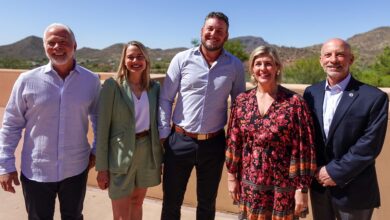Sunsetting RevPAR In Favor Of GOPPAR
By Larry Mogelonsky | October 13, 2020
How do you use RevPAR to evaluate individual property performance? If anything, COVID-19 has brought to light the shakiness in an over-reliance on this metric.
Let’s start with a back-of-napkin math problem that may have happened to you during the early stages of the pandemic. Business drops 50 percent due to the lockdown during March through May then you see a recovery of 50 percent of this number come summer. Occupancy is back to normal, right? Not true; it is actually still down 25 percent from where it was before the drop.
Here is another one, this time for two businesses. One experiences a drop of 15 percent; the other a drop of 60 percent. Which one is healthier? The answer is that you don’t know because there is insufficient data to draw an accurate conclusion.
You can make the obvious reference that the 60 percent decrease indicates a far more severe disruption to the budget and cash flow. It could also be that the first business with its 15 percent reduction went from an occupancy of 15 percent to 0 percent—which in itself would suggest that the first entity was struggling long before COVID hit—while the second went from 100 percent to 40 percent and you could argue that some revenue is better than none.
The game changer that is the coronavirus has resulted in numerical data the likes of which we have never seen in our lifetime. For example, a few hotel brands witnessed their month-over-month business increase by a third for April 2020 versus March 2020. Should we be excited by this? Does this mean the worst is over? Hardly.
This is exactly how we treat RevPAR, which is not revenue nor is it percentage occupancy. This pandemic has shaken the entire foundation of how we look at numbers and how we evaluate our business. Nowhere is this more apparent than the use of RevPAR figures. In the face of COVID-mandated hospitality protocols, what happens to these year-over-year comparisons when you are forced to put 25 percent of your rooms out of order to meet the viral safety guidelines and at the same time you have to increase your room rate by 25 percent to offset all the new cleaning costs?
As this metric is reliant upon ‘available rooms,’ a decrease in the total inventory raises RevPAR and so does any ADR increase. But this still doesn’t accurately forecast profits because occupancy and operating profit are both excluded from the calculations. For all you know, a blooming RevPAR can actually indicate fewer rooms for sale and surging costs that not even an ADR bump can mitigate, both ultimately resulting in smaller total profits.
Instead, we must look at gross operating profit per available room (GOPPAR). While RevPAR works on a macro-level when comparing markets, countries or continents, it now fails to reveal anything about a brand’s health on a per-property basis. If I were an owner, I would tell my GM as adamantly as possible, ‘I don’t care about RevPAR. I only look at GOPPAR. Just make the hotel’s P&L better.’
All of us in this business are responsible for the development and deployment of operational plans that are designed to maximize revenues and protect asset values. Notice here that I did not say maximize RevPAR and percentages. To be successful in a world of stymied traveler confidence, we will need to create a balance that now includes a ‘safety’ cost factor. This may lead to fewer rooms in order or possibly an extended room turnaround time. Under these circumstances, RevPAR becomes irrelevant.
As the game has pivoted to leisure, hotels should also look at total revenue—that is, revenue per available guest (RevPAG), which is also known as TRevPAR. In effect, we need to think holistically about the sum of all of the additional opportunities to generate revenue rather than taking a myopic focus on the rooms revenue silo. Food and beverage, such an integral part of any hotel stay, needs to be integrated as does ancillary income from spa, golf, parking and other amenities.
The bottom line is to think in a more connected nature—be it through GOPPAR or RevPAG—to maintain your margins through this ongoing crisis. As the effects of the pandemic will likely still be felt well into 2023 or 2024, you need to start maximizing ancillary capture from all guests to succeed.





Get involved!
Comments